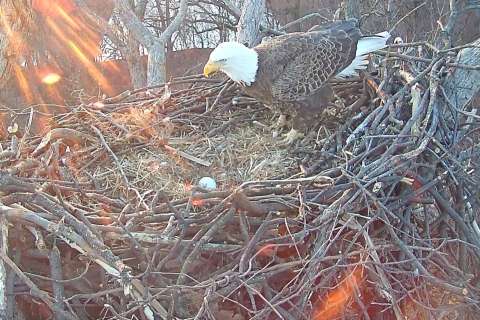WASHINGTON — The District’s famous bald eagle couple — “Mr. President” and “The First Lady” — are due to welcome two new hatchlings to the world, according to the American Eagle Foundation.
Viewers of the feathery duo and their two eggs should keep their eyes glued to the D.C. Eagle Cam this weekend and the following week for the hatching, the AEF said in a news release.
The first egg was laid on Feb. 19 and the second was laid on Feb. 23. The AEF anticipates that the first egg will begin to hatch around Sunday, March 26. They expect the second to hatch around March 30.
The group said their estimates may be off by a day or two.
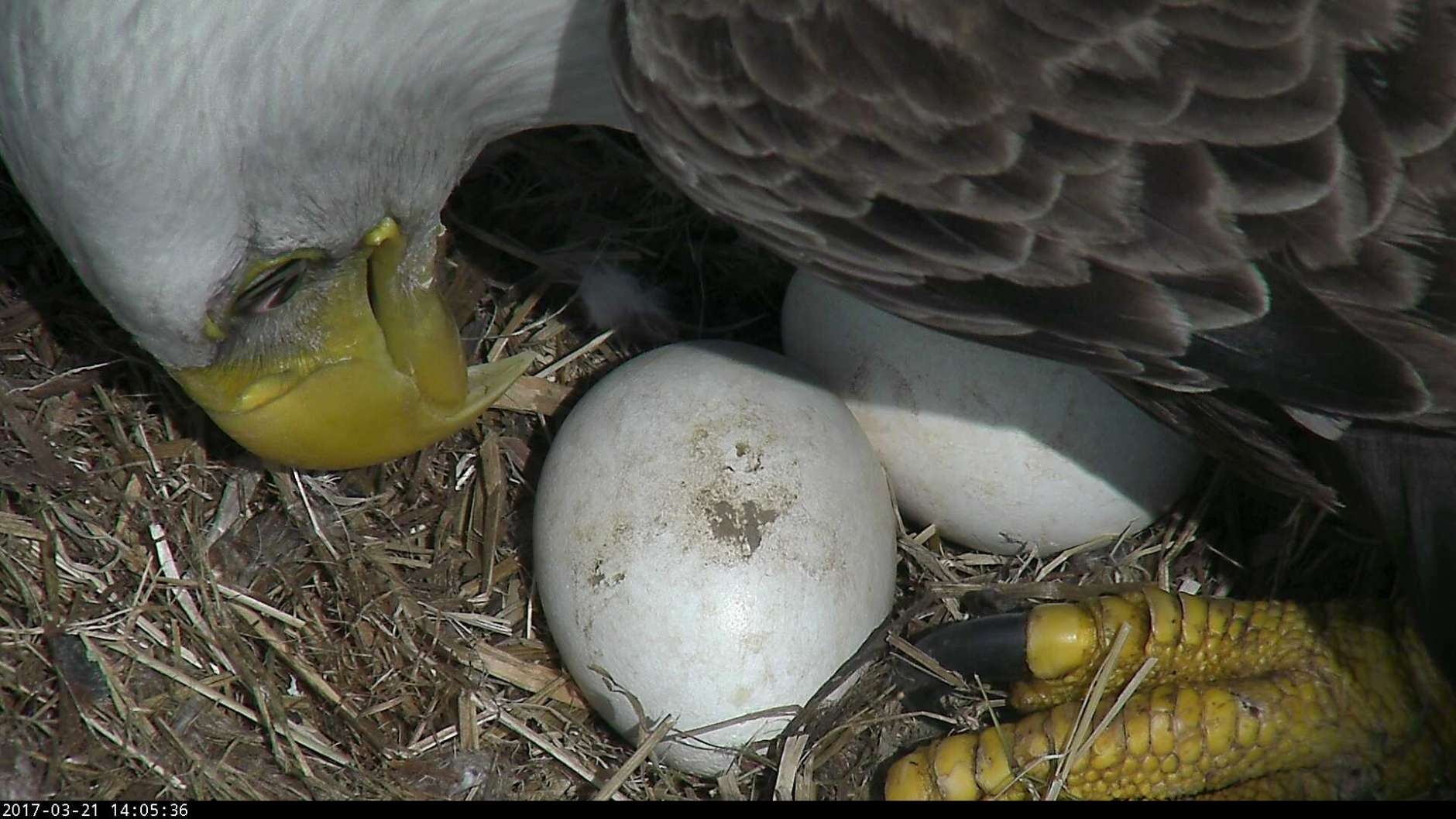
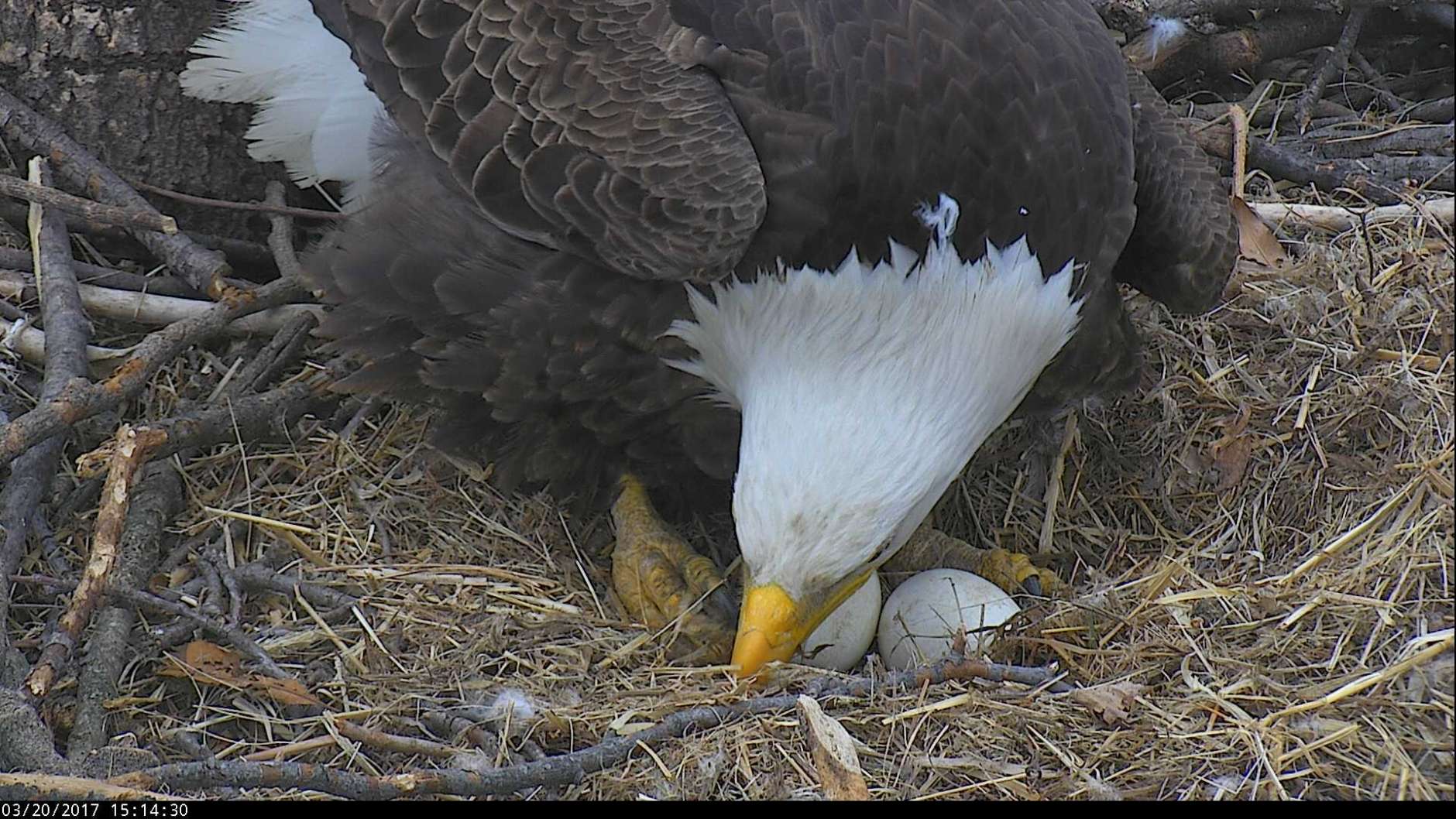
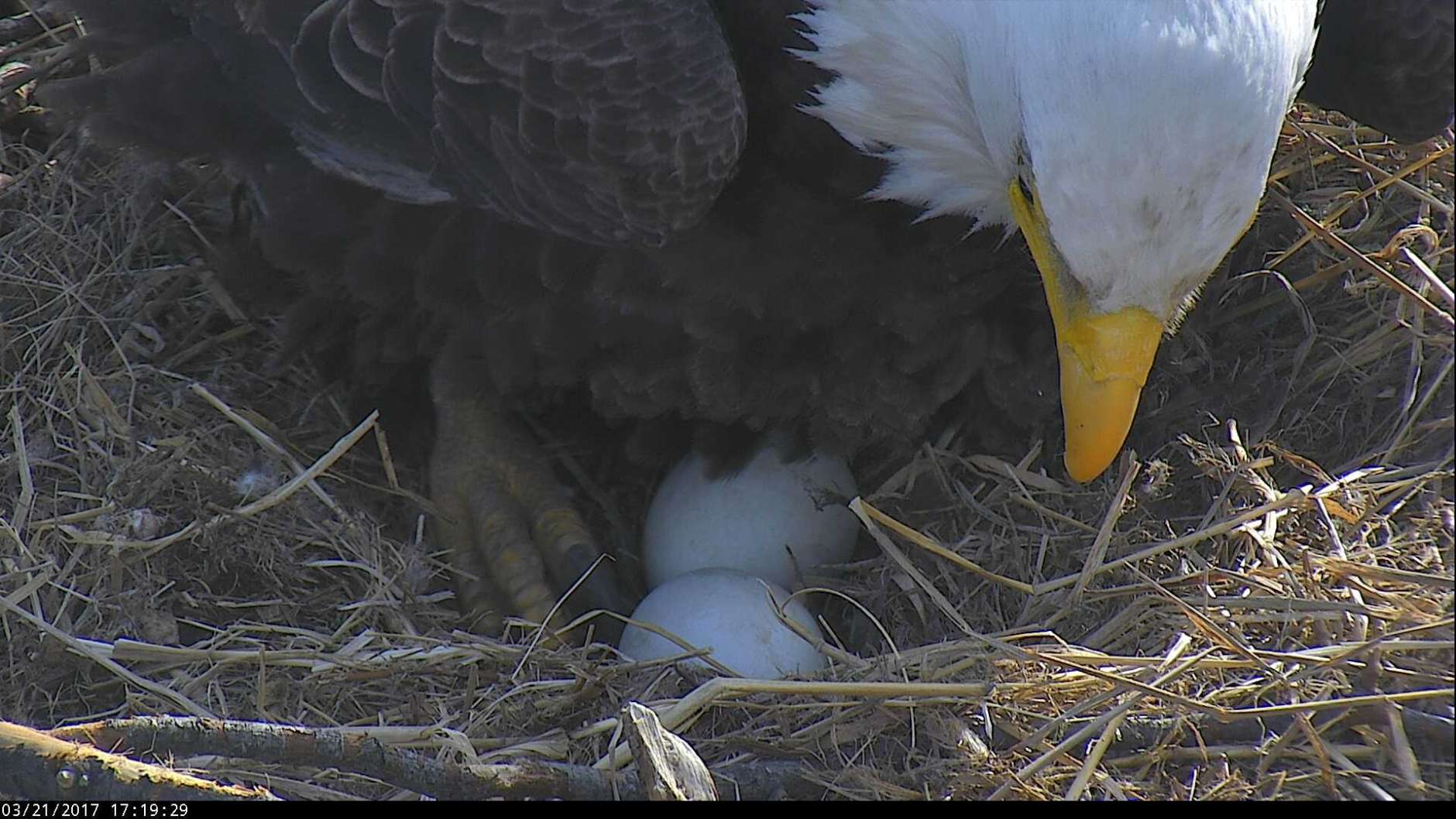
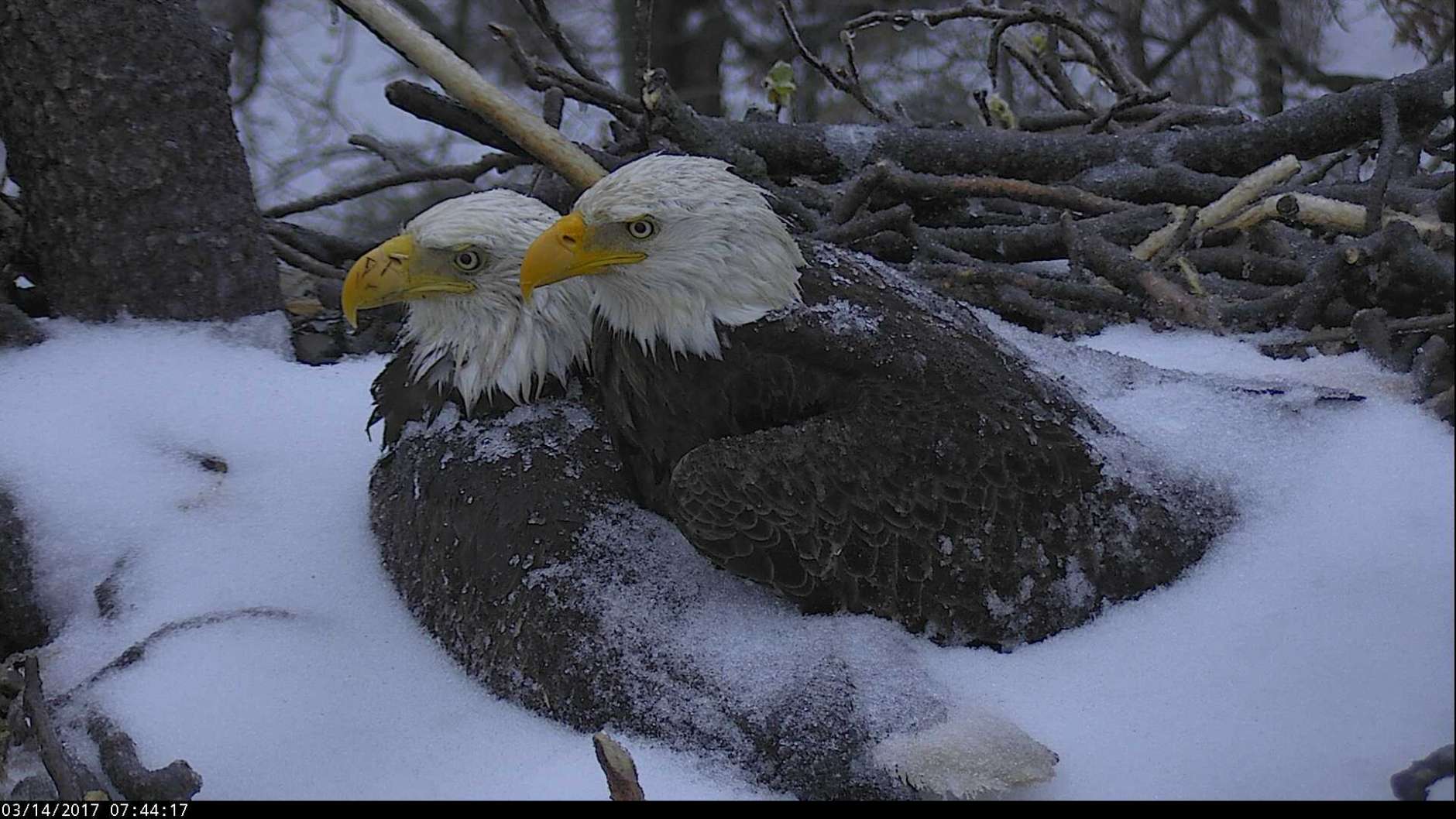
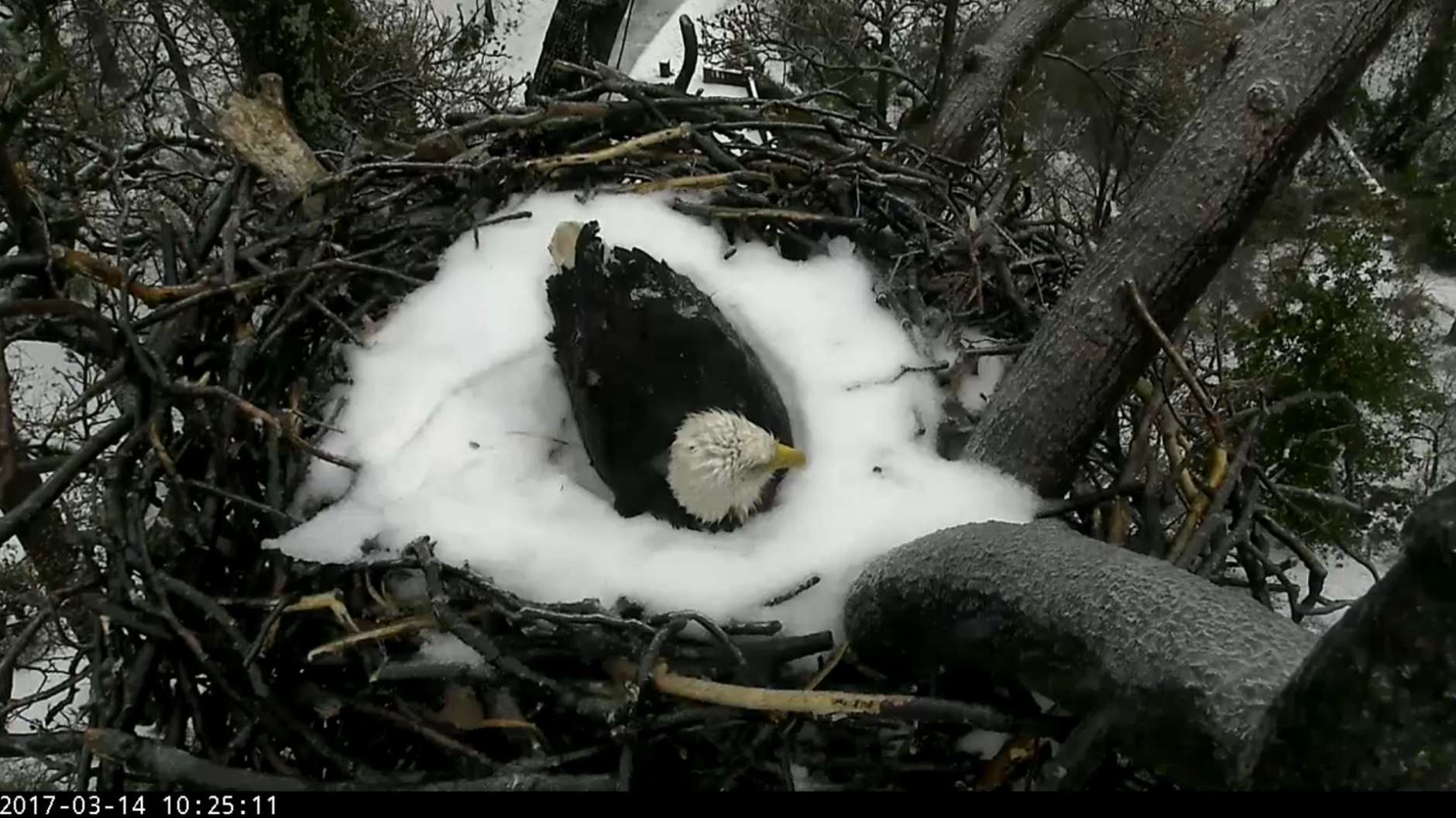
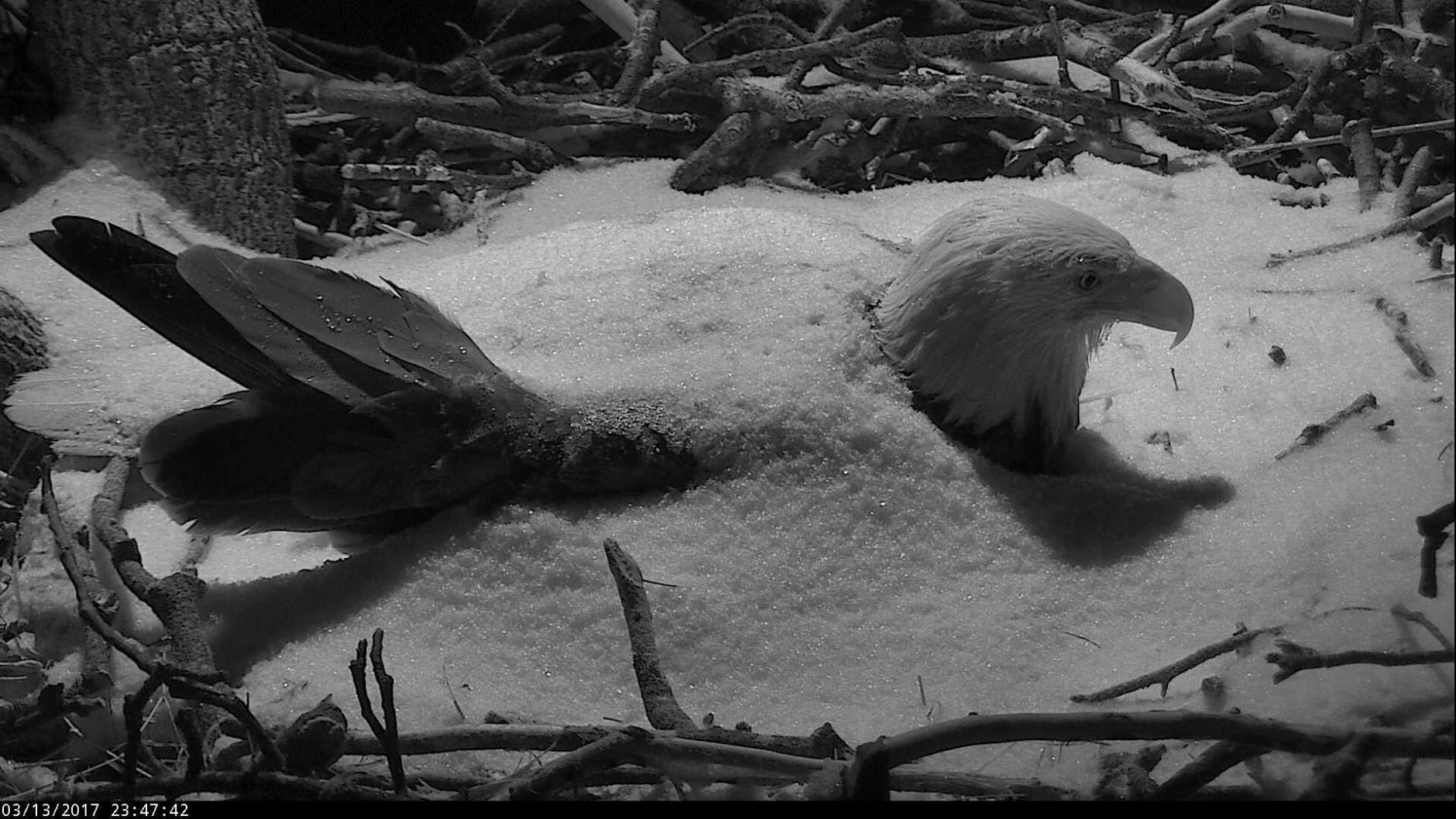
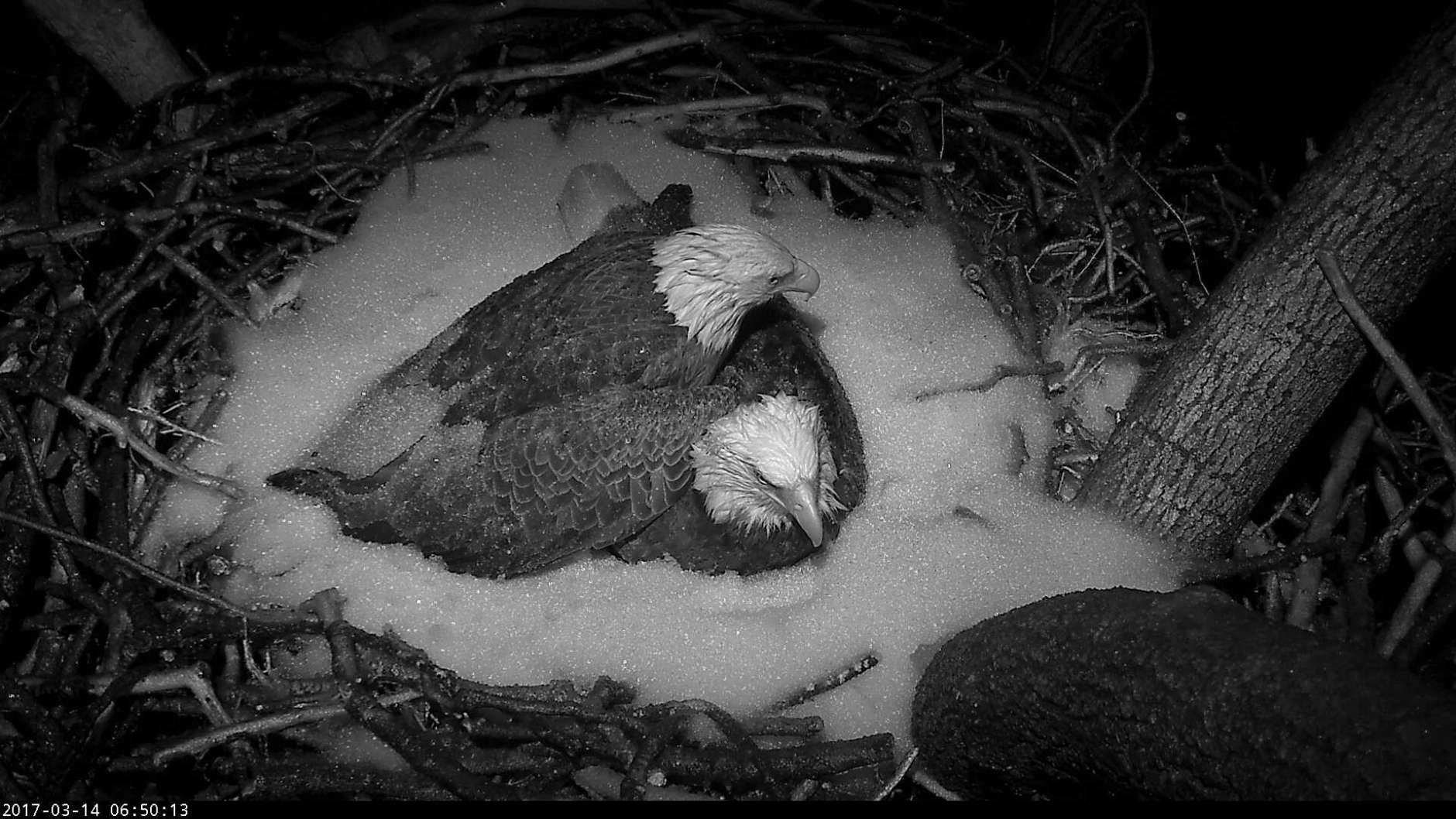
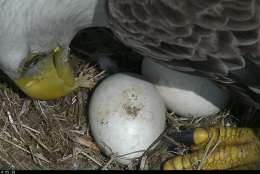
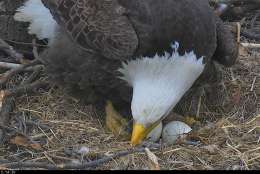
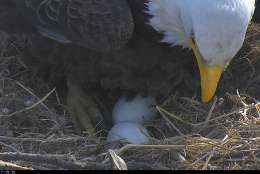
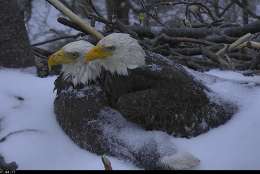
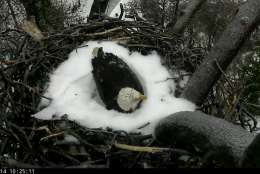
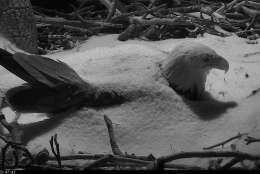
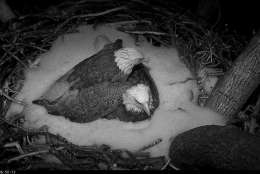
Each eaglet has an “egg-tooth” on the tip of its upper beak, which is used to crack holes in its eggshell from the inside. The first hole made in the shell is called a “pip.” It can sometimes take up to 24-48 hours for an eaglet to fully emerge from its shell after the first pip.
“The amazement of watching a tiny eaglet emerge from its fragile egg shell is a miraculous wonder of nature,” American Eagle Foundation President Al Cecere said in the news release. “Watching the eagle parents delicately feeding and brooding their young is a very special and unforgettable experience not to be missed.”
Last year, the eagle cams amassed more than 10 million views.
Last week, another bald eagle pair — “Liberty” and “Justice,” who nest in a tree on the property of a D.C. police facility — welcomed an eaglet of their own.


